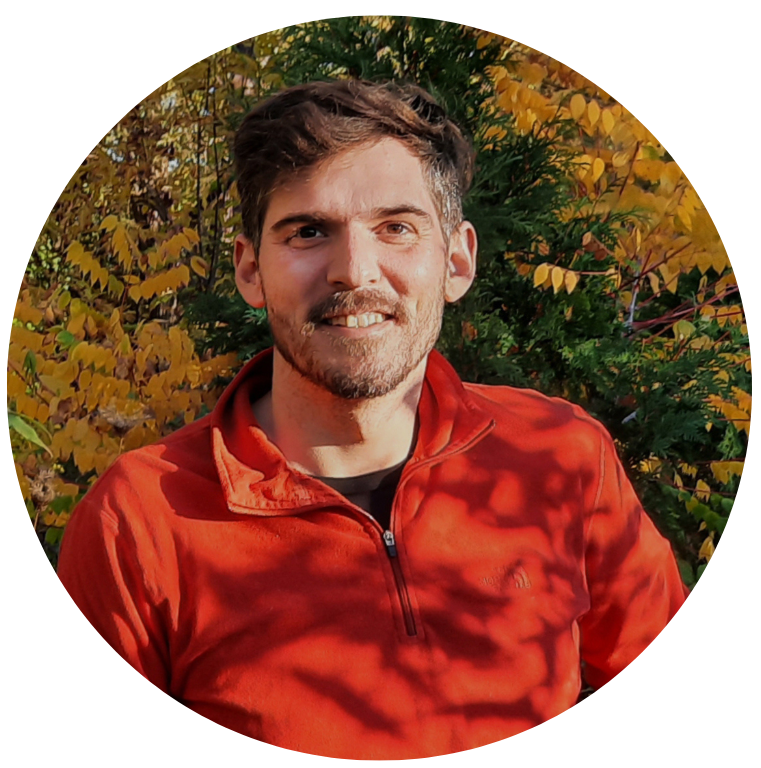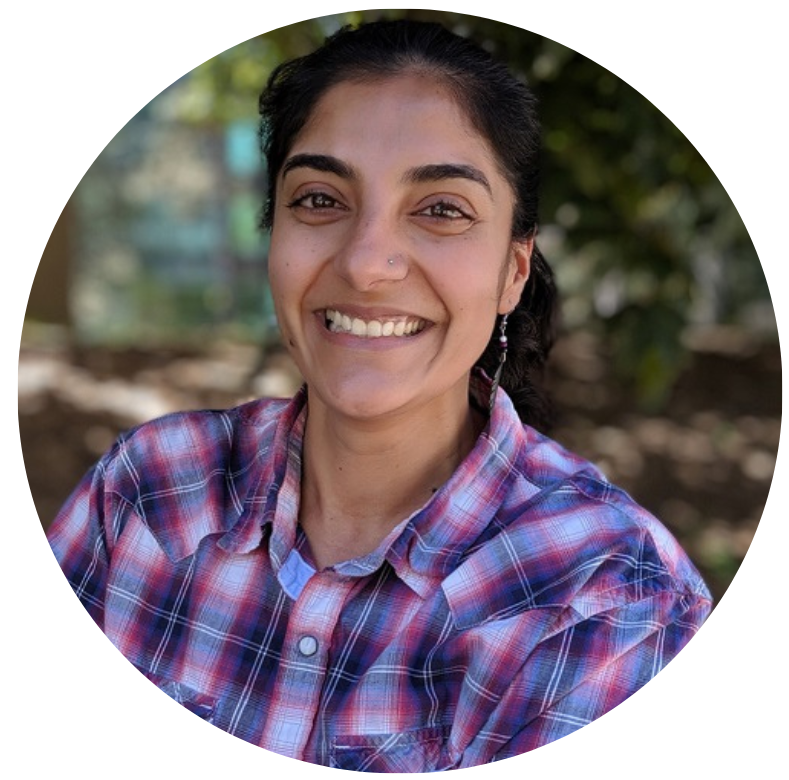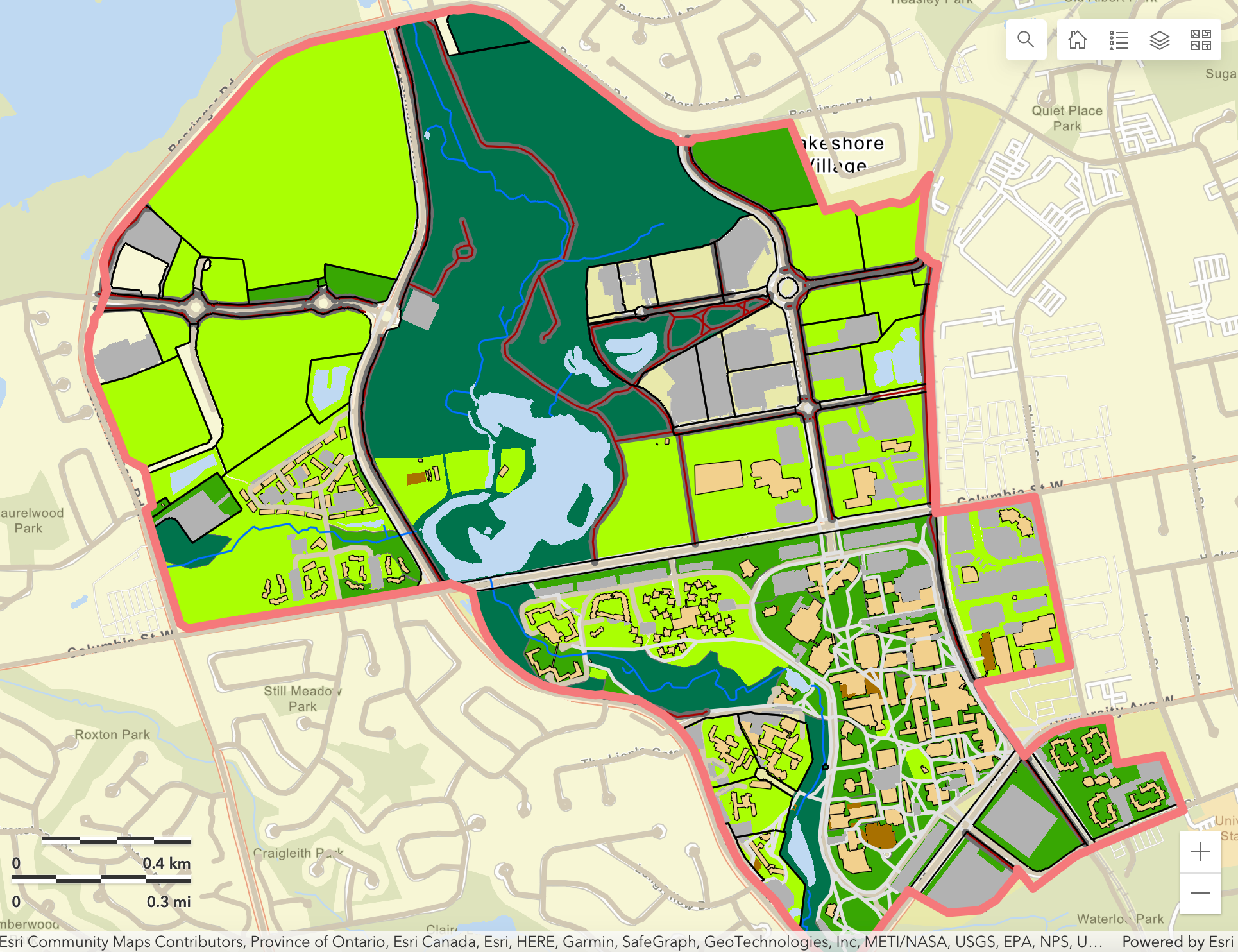Faculty member Shefaza Esmail and PhD Student Tim Alamenciak, focus on bringing together ecological research about campus to enable those who care for campus grounds to make decisions based on the scientific evidence.
1. Tell us about yourself
Tim: I am a fourth-year PhD student in the School of Environment, Resources and Sustainability, under the supervision of Dr. Stephen Murphy. My

research focuses on community-led ecological restoration and my passion is teaching. I was the recipient of the 2022 Centre for Teaching Excellence award and am actively exploring opportunities to return to university teaching. Currently, I am working full-time as the communications manager for Reep Green Solutions, a local environmental charity.
I have an undergraduate degree in Peace and Conflict Studies from Conrad Grebel and a Master of Journalism degree from Toronto Metropolitan University. I worked as a journalist for ten years and became acutely aware of the scale of environmental crises we are facing. I felt that there wasn’t enough I could do in that role, so I left my career and enrolled in the PhD program. When it comes to sustainability, we need everyone to be united behind these efforts. I see community-led action as a way to involve more people in climate action – significantly, people who might not otherwise be involved.
Shefaza: I came to the university as a PhD student in the School of Environment, Resources, and Sustainability (SERS).

The focus of my PhD research was investigating the diversion of organic waste and the use of compost in urban agriculture in Tanzania, the country where I was born. During my studies, I was also involved with the Centre for Teaching Excellence, and I now teach as a term lecturer in SERS. My academic background is in environmental engineering, and I enjoy rock climbing and volunteering within the community.
As a term lecturer in SERS towards the end of my PhD, I connected Tim Alamenciak and Mat Thijssen for a course on ecological restoration and we brainstormed how restoration projects on campus can be more strategically planned, which led to the conceptualisation of EcoMap and the Environmental Stewardship project.
2. Can you describe your research and its connection to sustainability challenges?
The campus EcoMap is a way to bring together ecological research about campus to enable those who care for our grounds to make decisions based on the scientific evidence. The University of Waterloo is home to an incredible environmental reserve and natural features, including Laurel Creek and woodlots throughout campus. Students are gathering data all the time through experiential learning courses. But there was not a useful catalogue of this data until our project. By collecting data and mapping it, we can provide evidence for ecological decision-making and empower students to engage in experiential learning.

We directed all funding from the Sustainability Action Fund towards providing good part-time work for students. The map was first the work of four brilliant research assistants: Melissa Greco & Sara Bohnert in the summer of 2021, and Ishani Dasgupta & Blake Zhang in the summer of 2022.
3. Why are you interested in sustainability? Were there any influence experiences or people who helped you along the way?
Tim: My journey started by taking some undergraduate environment courses at the University of Waterloo to see if I enjoyed this kind of research. I spent a summer working for minimum wage, at a local native plant landscaping company, to learn more about local ecosystems and plants. I found a passion in university teaching about sustainability and have committed to building my career in that direction.
My undergraduate experience in Peace and Conflict Studies at Conrad Grebel was transformative. It gave me a lens to look at the world that lays bare the conflict, inequality and injustice that lies at the root of so many sustainability challenges. While working with TVO, I produced a feature on Sarnia and visited Aamjiwnaang, a First Nations community heavily impacted by the chemical industry. I witnessed the degradation, and the restoration that was going on there: a greenhouse where settlers and Indigenous people grew native plants together; a creek restored and cleaned of toxins; and community-led monitoring of toxic chemicals. This experience transformed me and led me to focus my life and work on ecological restoration in order to address the damage that has been done to the Earth.
Shefaza: I became interested in sustainability through my undergraduate degree at the Macdonald Campus of McGill University. The campus had local initiatives, such as campus composting, Mac Farm, and Happy Belly, a way to give new life to food that would otherwise be wasted. I continued learning more about sustainability in various forms through my masters and PhD degrees.
My friends and colleagues in undergrad who exhibited abundance curiosity and passion for learning and sharing knowledge about sustainable living solutions. Their positivity for a hopeful future was contagious.
4. Can you share any outcomes or findings of your research and how they're supporting sustainability efforts?
The goal of the Environmental Stewardship initiative and the Campus EcoMap project is to enable the collection and tracking of data for green spaces on campus to enable strategic and systemic decision-making. As part of the project, we hired two rounds of part-time students with whose help we created a website to share the project and its progress with folks within the university as well as the general public. The Campus EcoMap was initially created as a visual reference delineating green spaces on campus and is currently being updated to include reference to datasets from studies and coursework on campus to better collate and track available data. The hope is that once these datasets are available and linked through the EcoMap, we will have a better understanding of the biodiversity on campus, the types and states of ecosystems on campus, as well as the health of the green spaces. These analyses will help inform more strategic land-use planning and maintenance and contribute to the overall sustainability efforts of the university grounds.
We are excited to share a link to both through this interview:
5. What is your vision of a sustainable future?
Currently the university is a large machine with many moving parts – parts that often do not get the opportunity to work or communicate with each other. Our vision of a sustainable future is one where people across various disciplines share knowledge and work together to implement solutions that are already being researched within the campus. Our hope is that the environmental stewardship initiative will provide that opportunity to share data and implement ecologically sound land management practices. Through these practices, we believe that the campus can lead the way on carbon-neutral (or carbon-negative) land practices that support soil security, biodiversity, and food security.
6. What advice would you give a student, junior faculty or early career researcher who’s exploring sustainability topics?
Tim: There’s a great quote from Wendell Berry: “I believe that the community - in the fullest sense: a place and all its creatures - is the smallest unit of health.” I’ve found this to be true in my life and work. This pairs well with the unattributed phrase: “community is not a spectator sport.” There’s a tendency to talk about the sustainability transition at either the individual or the systemic level, but the community level contains great potential.
This goes for your career: build a community of peers and mentors where you can.
Shefaza: Learn with curiosity and wonder, we sometimes get so stuck on “fixing” what is broken or recovering what is lost that we miss what we have and how we can nurture it and let it grow